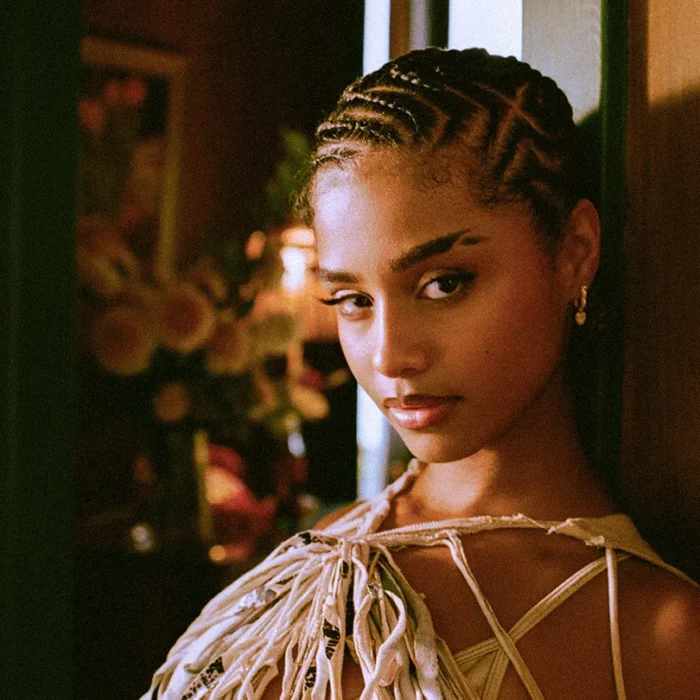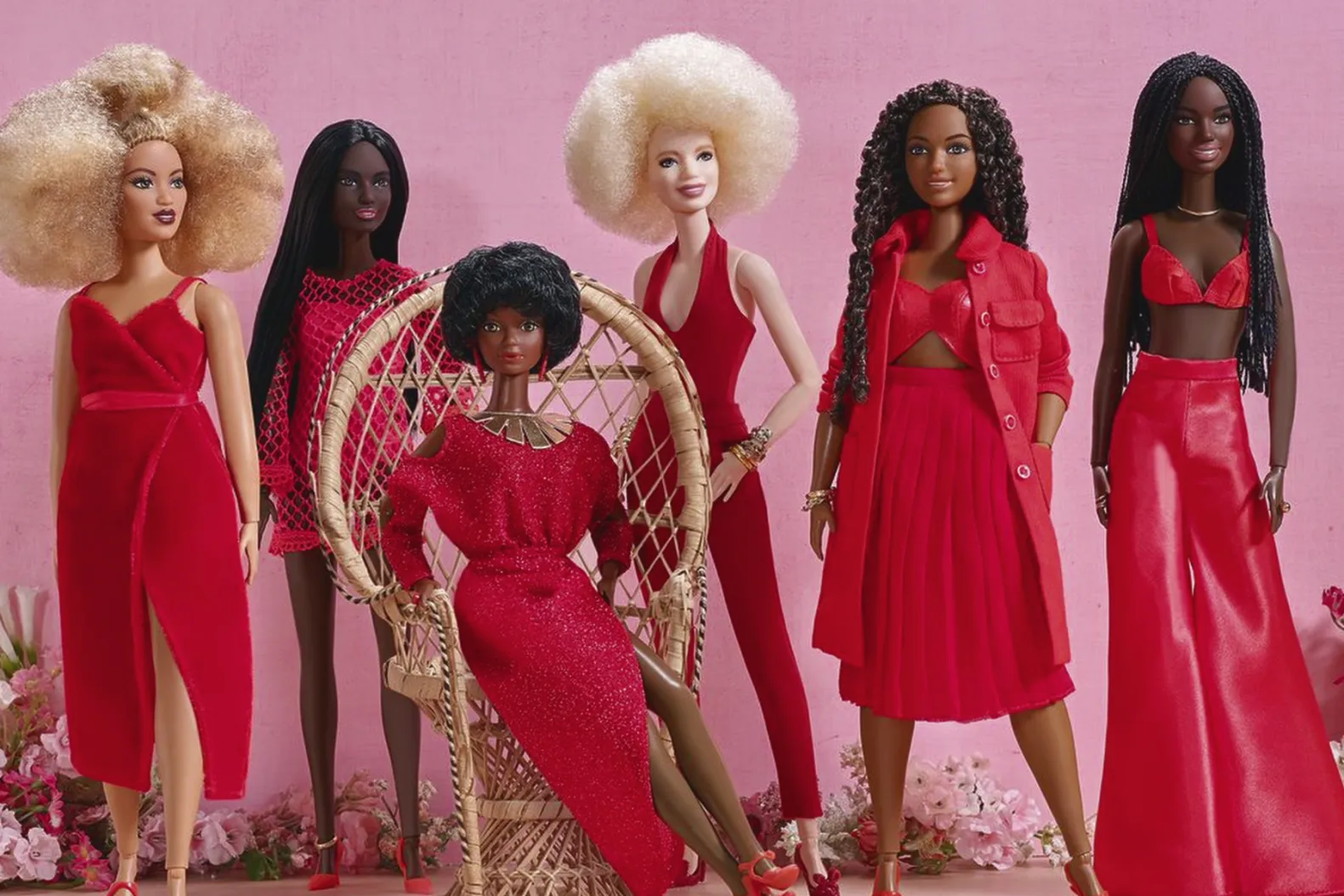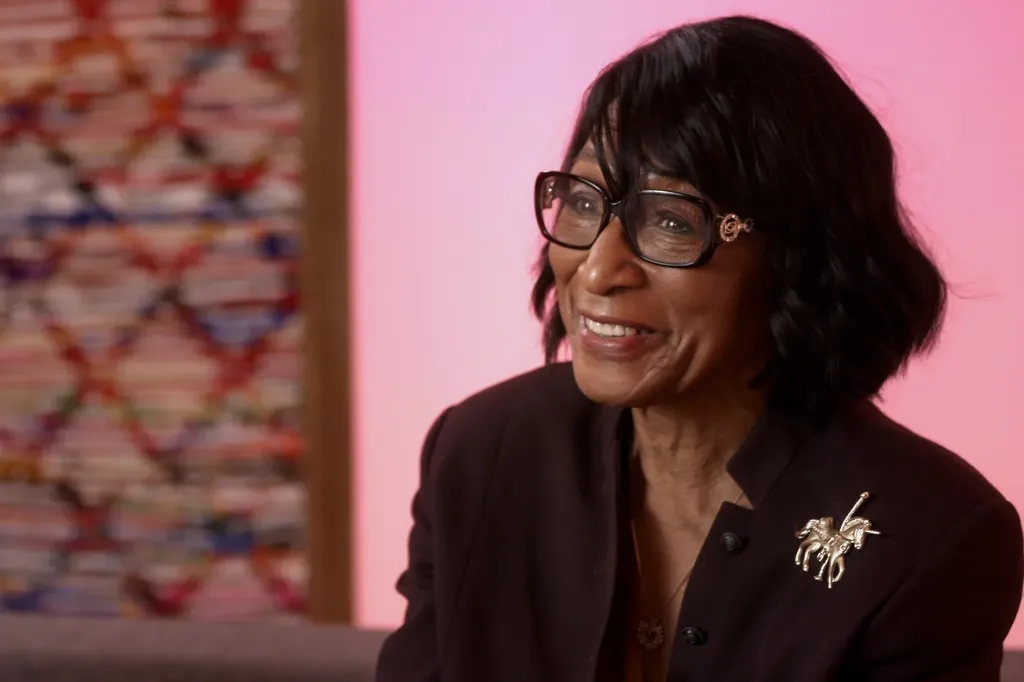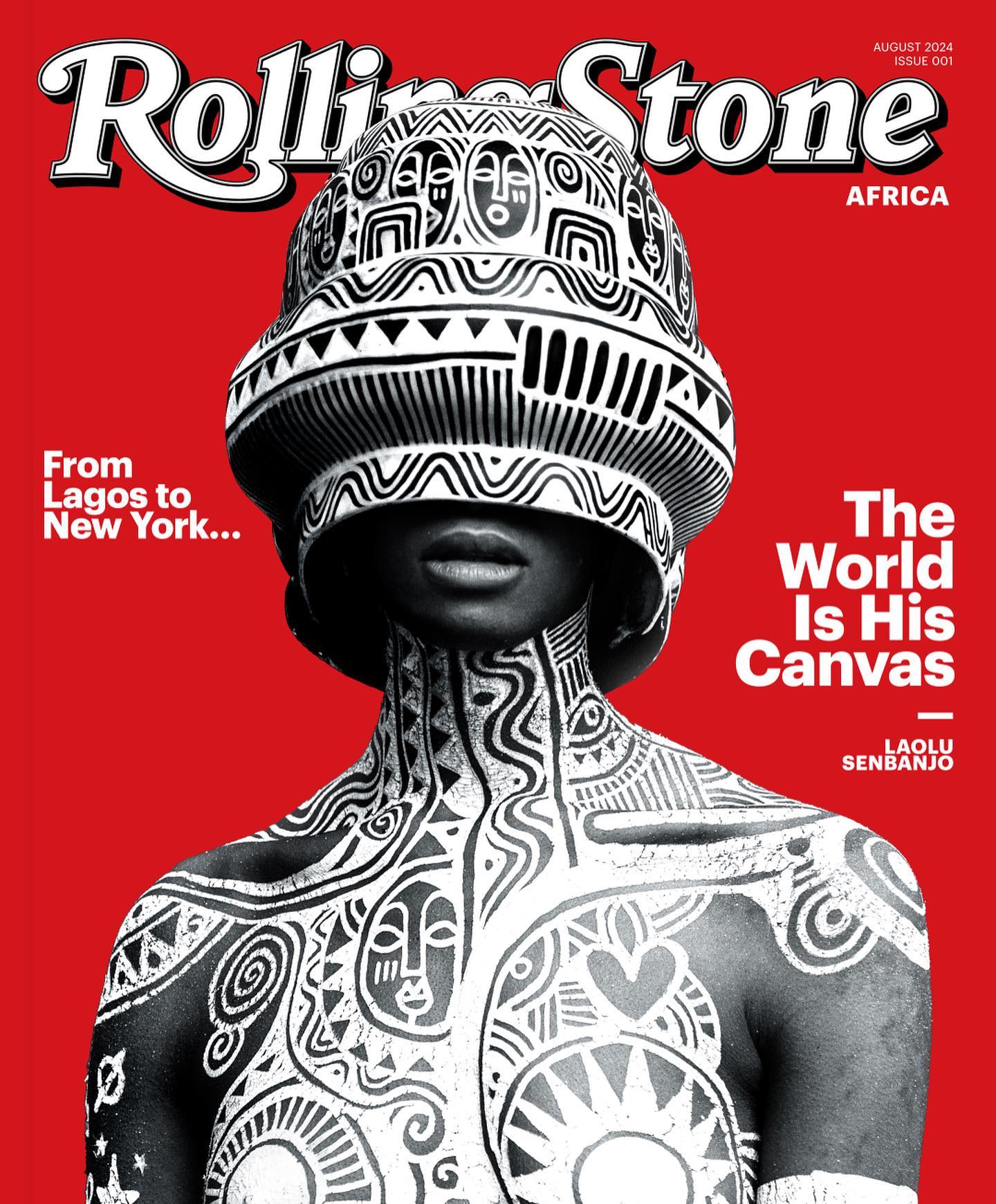

LAGUERIA DAVIS HATES dolls. At least that’s what the director of Netflix’s Black Barbie documentary (streaming now) says in the first few minutes of the film. As a kid, she preferred powering remote-control cars, listening to the radio, playing computer quiz games, and shooting hoops. But an internal switch flipped in 2011 when, at 33, she moved in with her aunt, whose walls towered with beady-eyed baby dolls and accessorized Barbies. As it turns out that aunt, Beulah Mae Mitchell, was one of Mattel’s first Black employees starting in the Fifties — and a key impetus for the 1980 creation of Black Barbie. When Davis learned that, she picked up a DSLR camera and a Zoom recorder, and started interviewing.
“If you asked me when I was younger if I’d be making a documentary about dolls, I’d laugh,” Davis tells Rolling Stone. “So, I always think of it in terms of, my aunt introduced me to her world of dolls, and I introduced her to my world of filmmaking.”

In addition to Mitchell, Davis speaks with Mattel employees past and present, researchers, and public figures like actress Gabourey Sidibe, California representative Maxine Waters, and ballerina Misty Copeland about the evolution and significance of the nearly 45-year-old doll.
Davis frames the 90-minute documentary in three chapters, sprinkling in her personal perspective around Barbie’s humble beginnings and highlighting three hidden figures at Mattel who for more than 50 years were instrumental in pushing the brand’s boundaries when it came to creating toys for a Black audience. Although Davis is a “behind-the-camera type of person,” viewers can hear her voice throughout the film expressing her surprise at how important this untold story really is. As she puts it at one point off-camera, “I thought this was going to be a simple story about stupid dolls.”
Mitchell, 86, joined Mattel in 1955 assembling jack-in-the-boxes, four years before the company debuted its iconic blond-haired Barbie. Company co-founder Ruth Handler would often visit Mitchell and other workers on the assembly line asking for suggestions, Mitchell says in the film, leading the two to develop a close friendship. In the Sixties, according to the doc, Mitchell and other line workers asked Handler to create a Black Barbie.
Initially, Davis says, Mitchell demurred when it came to her role in spurring a historic chapter in Barbie’s legacy. “On one hand she’s like, ‘Me? I’m a peon. Why do you want to talk to me? I didn’t do anything.’ She’s that type of person,” Davis says of her aunt, who later became a receptionist at Mattel before retiring in 1999. “But then at the same time, I think she was really curious [to dive into that history].”
After meeting Mitchell, viewers are introduced to Kitty Black Perkins — Mattel’s first Black designer, who actually created Black Barbie — and her protégé and successor, Stacey McBride-Irby, who designed Barbies from 1996 to 2011. Davis got the trio together for the first time at a Red Lobster in 2019, and the conversation was so lively she recreated the experience with a reunion for the documentary.

“When I saw the three of them together in the same space, I was like, ‘Oh my gosh, this energy, I have to get this in the film somehow,’” Davis says. “‘I have to bring the three of them together, on camera so I can capture this magic.’”

When Black Perkins saw the newspaper ad that led to her job at Mattel, she says she didn’t even know it was for the toy giant. She called the number on the blind listing, and soon enough — after purchasing her first Barbie — was submitting six clothing designs for the doll (instead of simply the one that was requested) to Mattel’s VP of preliminary design. In August 1976, she landed the gig. With few Black employees working at the company at the time, Mitchell sought her out on the design floor to welcome her to the team.
Within four years, Black Barbie was born. Mellie Phillips, a Black woman who designed hair for Mattel dolls, came up with a short, curly hairstyle. Another Black designer gave Black Barbie fuller lips, a broader nose, and slightly wider hips than her white predecessor. Black Perkins, who designed Black Barbie’s ruby, high-slit dress, says she drew inspiration from Diana Ross’ showstopping looks.
“I didn’t want her to be too costumey but at the same time, I didn’t want her to be too fantasy,” Black Perkins tells Rolling Stone. “I wanted her to be something that was reality-based, and I think we achieved that.”
Prior to the launch of Black Barbie, melanated Mattel toys existed — such as the glamorous Christie, who said “Let’s go shopping with Barbie!” if you pulled a string on her back — but only as friends of the company’s namesake doll. In the 1960s and 1970s, critics felt Christie’s body reflected white “standards of beauty,” according to the Anti-Defamation League, and failed to represent African cultural features. Yet Black Perkins counters that if Mattel had implemented “drastic” changes to the Malibu Barbie prototype, she doesn’t believe the doll would’ve been well received.
“When it comes to features, those are things that really adults think about,” Black Perkins says, noting that the company conducted focus groups with children during the design phase. “Little girls, they don’t care. As long as the skin color is right and the hair is the right color, that’s what they responded to. It wasn’t the fact that she didn’t have bigger hips or that she didn’t have a wider nose or she didn’t have a really, really thick lip. If you think about it, you’re working in miniature, which is 11-and-a-half-inches. How big can you make the lips on an 11-and-a-half-inch doll?”
After Black Perkins stepped down in 2003, McBride-Irby held a major role on the design team, creating a pink ball gown for the historic Black sorority Alpha Kappa Alpha doll in 2008, leading the “So-In-Style” Black Barbie line the following year, and reimagining Black Barbie for the doll’s 30th anniversary. In the film, key points like these in the development of Black Barbie are placed against a timeline of historical events and pop-culture moments, such as the 1954 Brown V. Board of Education decision and the 2009 inauguration of Barack Obama. Black Barbie executive producer Aaliyah Williams, who joined the project in 2021, says the timeline provided essential connective tissue.

“This is when Janet Jackson dropped ‘Rhythm Nation’ or this is when Daisy Bates and the Little Rock Nine integrated the schools,” Williams says, “giving a full spectrum of all the things that are happening in the world while these incredible innovations were happening at Mattel with these three Black women.”
After Black Barbie’s 2023 premiere at South by Southwest premiere, Shonda Rhimes snatched it up, with Shondaland and Netflix acquiring the rights. With the weight of those producers behind them, she and Davis then took four days to record additional interviews for the doc with Rhimes, Copeland, and Olympic medalist and fencer Ibtihaj Muhammad, all of whom have Barbies made in their likeness. Rhimes praised her doll for its accurate representation of her figure, while Muhammad described her Barbie’s strong legs, which helped the fencer win an Olympic medal.
Despite the company’s strides in representing real women, in the third part of the documentary — titled “Future of Black Barbie, Center of Her Own Story” — Davis questions how far Mattel still has to go to change public opinion about Black dolls. Davis places a critical eye on Barbie, analyzing other media from the Barbie universe. UCLA sociology professor Antwann Michael Simpkins discusses the 2021 animated TV movie Barbie: Big City, Big Dreams, in which an “over-credentialed” Barbie “Brooklyn” Roberts competes against an “inadequate” Barbie “Malibu” Roberts in a performing arts competition. Instead of Brooklyn, who is Black, claiming the well-deserved top prize, the competitors tie.
“It’s interesting that we understand Brooklyn to be in competition with someone who’s wholly inadequate to be on the stage with her, right?” Simpkins said in the documentary. “And so this is the experience that many Black women experience day in and day out. It’s seen as progressive that ‘we’ve hired you.’”

Also in its final segment, Black Barbie reimagines the Clark Doll Test of the 1940s, in which children of color presented with both Black and white dolls routinely identified the white dolls as the ones they preferred. The film’s version of the test, conducted by child and adolescent studies professor Amirah Saafir, reveals many kids define the white doll as the “real Barbie.”
“The kids were very honest about who they thought Barbie was and is, and it wasn’t any of the [non-white] Barbies,” Davis says. “Also, listening to my niece talk about the world being predominantly white, based off of that and my own personal experiences, I would say that the perception hasn’t changed.”

Senators Press Pentagon for Answers on Rash of Overdose Deaths

BTS’ Label Says They’ve Filed a Criminal Complaint Against Internet Troll Spreading ‘Ill-Intentioned Rumor’

Conservatives Are Melting Down Because Lizzo Played James Madison’s Crystal Flute

How to Help Hurricane Ian Victims in Florida, Puerto Rico, Cuba, and Dominican Republic
Of course, the elephant-sized Barbie in the room is Greta Gerwig’s hot-pink blockbuster Barbie, which dominated pop culture last year. Black Barbie was wrapped before Gerwig’s movie was released, so, Davis says, “it didn’t occur to us to think about talking about that particular film.” But the two films offer an interesting comparison. Despite a coterie of diverse supporting Barbies — Issa Rae as President Barbie, Alexandra Shipp as Writer Barbie, trans model Hari Nef as Doctor Barbie, fuller-figured actresses Nicola Coughlin and Sharon Rooney as Diplomat and Lawyer Barbies, respectively — Gerwig’s film still centered on the original, impossibly-proportioned, blonde-haired, blue-eyed Malibu Barbie, played by Margot Robbie. The film was a phenomenon, ultimately grossing $1.4 billion worldwide at the box office.
It’s impossible to say how audiences would have responded to a summer movie built around a Black Barbie. But in the meantime, Davis is happy to do her part in spotlighting the powerhouse women who planted the seed for Barbies of color at Mattel. “We’re giving Black Barbie, my aunt Beulah, Kitty Black Perkins, Stacey, their flowers, their credit,” she says, “and, like I said at the end of the movie, making Black Barbie the hero of her own story.”

© Copyright Rolling Stone Africa 2024. Rolling Stone Africa is published by Mwankom Group Ltd under license from Rolling Stone, LLC, a subsidiary of Penske Media Corporation.
By providing your information, you agree to our Terms of Use and our Privacy Policy. We use vendors that may also process your information to help provide our services.
By registering for our sites and services, you agree to our Terms of Service (including, as applicable, the mandatory arbitration and class action waiver provisions) and our Privacy Policy.
We use vendors that may also process your information to help provide our services.
This site is protected by reCAPTCHA and the Google Privacy Policy and Terms of Service apply.
By providing your information, you agree to our Terms of Use and our Privacy Policy. We use vendors that may also process your information to help provide our services.